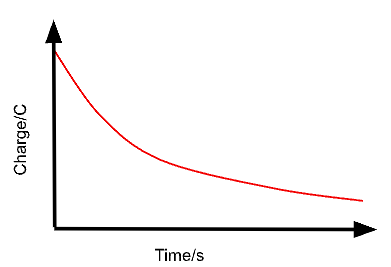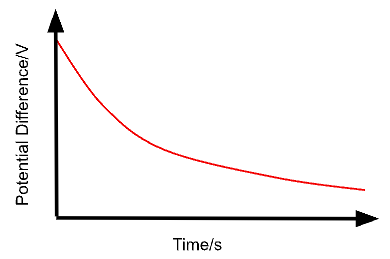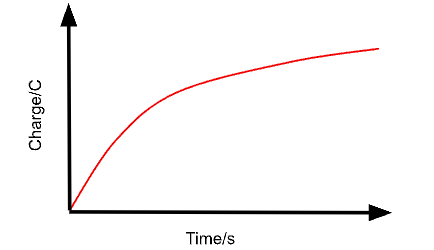AQA A LEVEL Physics
1/22
Earn XP
Description and Tags
1. Gravitational Fields Newton’s Law of Gravitation: Attractive force between two masses. 𝐹 = 𝐺 𝑚 1 𝑚 2 𝑟 2 F= r 2 Gm 1 m 2 Gravitational Field Strength: 𝑔 = 𝐹 𝑚 = 𝐺 𝑀 𝑟 2 g= m F = r 2 GM Gravitational Potential (V): Work done per unit mass to bring a mass from infinity. 𝑉 = − 𝐺 𝑀 𝑟 V=− r GM Escape Velocity: Minimum velocity needed to escape a gravitational field. Orbits: Circular and elliptical motion of satellites (Kepler’s laws). 2. Electric Fields Coulomb’s Law: Force between two point charges. 𝐹 = 1 4 𝜋 𝜀 0 ⋅ 𝑄 1 𝑄 2 𝑟 2 F= 4πε 0 1 ⋅ r 2 Q 1 Q 2 Electric Field Strength: Point charge: 𝐸 = 1 4 𝜋 𝜀 0 ⋅ 𝑄 𝑟 2 E= 4πε 0 1 ⋅ r 2 Q Uniform field: 𝐸 = 𝑉 𝑑 E= d V Electric Potential (V): Work done per unit charge to bring a charge from infinity. 𝑉 = 1 4 𝜋 𝜀 0 ⋅ 𝑄 𝑟 V= 4πε 0 1 ⋅ r Q Capacitance: 𝐶 = 𝑄 𝑉 C= V Q , energy stored 𝐸 = 1 2 𝑄 𝑉 E= 2 1 QV Capacitor discharge: Exponential decay, 𝑉 = 𝑉 0 𝑒 − 𝑡 / 𝑅 𝐶 V=V 0 e −t/RC 3. Magnetic Fields Magnetic Flux Density (B): Measured in Tesla (T). Force on a current: 𝐹 = 𝐵 𝐼 𝐿 sin 𝜃 F=BILsinθ Force on a moving charge: 𝐹 = 𝐵 𝑞 𝑣 sin 𝜃 F=Bqvsinθ Circular Motion of Charged Particles: Caused by magnetic forces acting as centripetal force. Magnetic Flux: Φ = 𝐵 𝐴 cos 𝜃 Φ=BAcosθ Faraday’s Law: Induced EMF is proportional to rate of change of magnetic flux. 𝜀 = − 𝑑 Φ 𝑑 𝑡 ε=− dt dΦ Lenz’s Law: Induced EMF opposes the change that caused it (conservation of energy). AC Generators & Transformers: Use electromagnetic induction. Transformer equations: 𝑉 𝑠 𝑉 𝑝 = 𝑁 𝑠 𝑁 𝑝 V p V s = N p N s 4. Motion in Fields Analysis of particle motion in: Gravitational fields (e.g., orbits) Electric fields (e.g., deflection in CRT) Magnetic fields (e.g., cyclotron paths)
Name | Mastery | Learn | Test | Matching | Spaced |
|---|
No study sessions yet.
23 Terms
State some differences between electrostatic and gravitational forces?
Electrostatic forces are dependent on the charge of the objects involved and can be both attractive and repulsive.
whereas gravitational forces are always attractive and depend on the mass of the objects.
Compare the PE and KE of a lower orbit to a higher orbit.
A lower orbit mass has less potential energy but more kinetic energy.
A higher orbit mass has more potential energy but less kinetic energy.
Rank the 4 fundamental forces based on size
Nuclear
Weak
Electrostatic/Electromagnetic
Gravitational
Electric field line always go from ____ to _____.
positive to negative charges.
What is the magnitude of E in an uniform electric field?
P.d. between plates.
What trajectory does a particle entering a uniform field at right angles travel in?
Electric and Gravitational: It follows a parabolic path due to the constant acceleration (Constant magnitude and direction).
Acceleration: It follows a parabolic path due to the constant centripetal acceleration (Constant magnitude but different direction).
State what the area under the graph of charge against p.d. represents.
Energy stored by the capacitor.
Describe the Q against t graph for discharging a capacitor through a resistor.
The graph is an exponential decay, starting from the maximum charge and approaching zero over time as the capacitor discharges.

Describe the V against t graph for discharging a capacitor through a resistor.
The graph is an exponential decay, starting from the maximum p.d. and approaching zero over time as the capacitor discharges.

Describe the I against t graph for discharging and charging a capacitor through a resistor.
The graph is an exponential decay, starting from the maximum current and approaching zero over time as the capacitor discharges.
Only difference between these two are the direction of the current flow. charging (+ is into the capacitor and out of it is - ) .

Describe the V against t graph for charging a capacitor through a resistor.
The graph is an exponential growth, starting from the maximum charge and approaching zero over time as the capacitor discharges.

Describe the Q against t graph for charging a capacitor through a resistor.
The graph is an exponential growth, starting from the maximum charge and approaching zero over time as the capacitor discharges.
Under what condition must a wire be in a magnetic field to experience a force
The field must be perpendicular to the wire for the wire to experience a force.
F= BIl
What is the equation for a force felt by a moving charge
F=BQv
What happens when you move a straight conductor through a magnetic field
The electrons experience a force pushing them to one side of the conductor.
This induces an emf across the conductor.
As the conductor continues to travel through the field. there is a change in flux, so emf continues to be produced.
What equation is for an emf by a rotating coil at a constant rate in a magnetic field?
emf = BAN wsin(wt)
Where w is the angular velocity of the rotating coil.
Describe how to use an Oscilloscope
This device displays AC waves, the x axis is called the time base and shows how long it takes the wave to move 1 division and the Y axis shows how much p.d. is needed to move the wave up 1 division. Using this we can determine the peak voltage, time period and frequency.
How does a transformer work?
An AC in the primary coil creates a changing magnetic field in the soft iron core. This changing flux links to the secondary coil and induces an emf (Faraday’s Law). The soft iron core increases flux linkage. More turns in the secondary coil step up the voltage; fewer turns step it down. Transformers only work with AC as a changing flux is needed for induction.
Why are transformers used?
By changing the number of coils, the transformers can increase the voltage and reduce the current , reducing the amount of energy wasted to the surroundings. The voltage is dropped again to reduce danger to homes.
Transformer Efficiency

What are eddy currents and how are they produced?
When a conductor moves through a magnetic field, a change in flux occurs.
This change influx causes an emf to be induced in the conductor.
These emf cause currents to flow in circular paths within the conductor - These are known as eddy currents.
Why are eddies a problem? State how to minimise them.
Eddie’s cause heating of the conductor due to electrical resistance, which can lead to power loss.
According to Lenz's Law, eddies create their own magnetic field that opposes the change that caused them (primary coil in transformers), often leading to drag on moving conductors.
The can be reduced by:
Laminating the iron core (splitting into thin, insulated layers.)